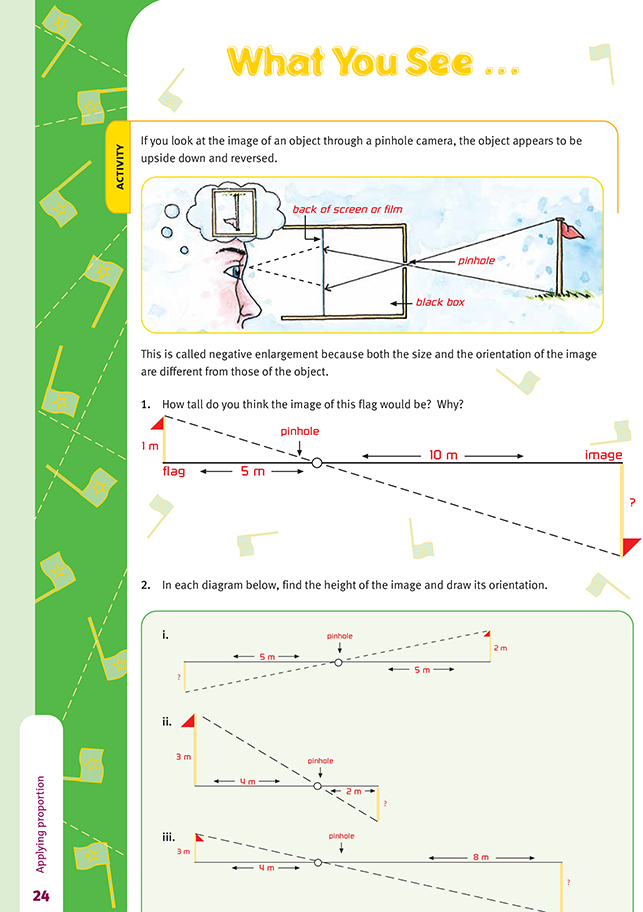This is a level 4 number activity from the Figure It Out series. It relates to Stage 7 of the Number Framework.
A PDF of the student activity is included.
Click on the image to enlarge it. Click again to close. Download PDF (511 KB)
apply simple proportions
FIO, Level 4+, Number, Book Six, What You See... Page 24
This activity has similarities with the activity on the previous page because they both deal with spatial visualisation and proportion.
Spatial visualisation is needed to mentally reorientate the flags into an upside-down and reversed position. Those students who find the mental manipulation of the flags a bit difficult could perhaps begin by using small model flags and physically changing their positions.
The concept of proportion that the students need to understand is that the size of the image relates to its distance from the pinhole compared with the distance of the flag itself from the pinhole. For example, in question 1, the image is 10 metres from the pinhole, whereas the flag is just 5 metres from it. This means that the image is twice the distance from the pinhole that the flag is, so the height of the image will be twice
that of the flag. This can be shown mathematically as:
Although it may be reasonably obvious to most students that the image will be 2 metres, it may be useful to review the maths involved in determining this. Once again, it is the identity principle involved (in this case, multiplying by 1) and can be set out as 1/5 x 2/2 = 2/10.
Notice that in question 2i, the distance of the flag and image from the pinhole are identical, which means that the height of the image is the same as the height of the flag.
The students may wonder about the height of an image being greater than that of the original flag (question 2iii) as this would not normally be the case in a pinhole camera. However, if they can imagine the back of the camera being extended backwards a considerable distance (and much enlarged), they might see that an image can indeed be much bigger than the original object.
Answers to Activity
1. The image would be 2 m tall because it’s twice the distance from the pinhole than the flag is.
2.

